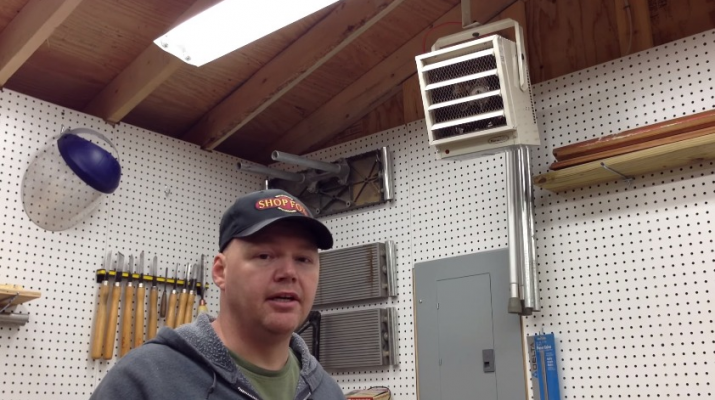Floor Fan Stopped Working? Your Troubleshooting Guide
A great floor fan is an invaluable asset in your home. It allows you to circulate air and feel cooler when the temperatures rise, and you can often save money on your electricity bills when you use your fan instead of turning on your air conditioner on warm (but not yet stifling) days. You can even use a floor or table fan on a low setting to help circulate heat in the winter time — a particularly effective method for making a pellet or wood stove work harder in your home.
But what happens when your electric fan stops working? Your first step doesn’t have to be a trip to the home improvement center for a new fan. Depending on the problem, you may be able to fix your fan yourself, whether it’s a stand fan, ceiling fan or a box fan.
Here’s how to get started to see if a simple fix is within reach to make your fan work again.
1. Check the Cord
It sounds simple, but your first step should be to make sure the cord is securely plugged in. Over time, vibrations from a fan motor can loosen a plug from an older outlet, so check this first. If your plug keeps falling out, you may want to replace the receptacle for a nice, tight fit.
If you hear a humming sound but the fan isn’t working, that’s a sign your fan is getting electricity. You can skip to Step 6 to continue troubleshooting at this point.
2. Check Your Circuit Breaker
If your cord is plugged in but nothing happens when you turn on your fan, check to see that you have electricity running to the outlet. To do this, open your breaker panel and look to see if the circuit breaker has been tripped. You’ll be able to tell because the thick, black switch will be moved to the “off” position. If you’re not sure which circuit controls which rooms, just check to see if any are out of place.
If you notice that a breaker has been tripped, flip it back on and then try turning on your fan again. If it works, you should be all set. (Though you may want to investigate what caused the breaker to trip in the first place. If you’re using a very old fan, it could be drawing excess electricity and causing your breaker to trip. If this is the case, it’s best to buy a new fan with additional safety features to prevent shorts and reduce the risk for electrical fires in your home.)
3. Check for Power to Your Outlet
If you’ve tried both of these steps but your fan still won’t work, try plugging your fan into a different outlet. If it works, this is a sign that you have an electrical problem. You can test the flow of power to your outlet by purchasing an inexpensive receptacle tester. If you discover that your outlet has no power even after resetting the circuit breaker, call an electrician for help.
4. Check the Fan Fuse
Many fans — especially large, industrial-strength ones — are equipped with a thermal fuse for safety. Like the circuit breakers in your house, these fuses are designed to break the electrical connection when too much electricity causes your fan to overheat. When the fuse melts, it breaks the connection and cuts power to the fan. Check the cord and the inside of your fan for this fuse. If you’re not sure whether you have one or where to look, consult your owner’s manual or search for a PDF of it online by Googling the model number. If you discover that the fuse has blown, you’ll need to order a replacement to get your fan working again.
5. Replace the Cord
If your fan still doesn’t work after you try it in a different outlet and check the fuse, carefully inspect the cord. Is it frayed? Has it been chewed on by a curious pet? Are the prongs bent? Is the cord securely attached to the fan body, or is it loose? If you suspect a problem with the cord, you can replace it fairly easily. Buy a matching cord with the same type of plug and same gauge wire at your local hardware store — bring your fan along to ask for help finding a match if you’re not sure. From there — and with the fan unplugged! — you can remove the cord receptacle cover with a screwdriver or pliers, then remove the cord by untwisting the connecting wires. It can be helpful to snap a photo of the way the cord is attached to the appliance so you can refer to it as you attach the new cord.
6. Clean the Fan
Sometimes your fan blades can seize up if they are stuck on dirt and debris that builds up in the fan. Use an air compressor or the crevice tool on your vacuum to carefully clean away excess dirt from all parts of your fan. Once you dust off the outside, remove the metal or plastic fan blade cover and clean dust from the blades, paying special attention to the place where the blades connect to the rear bearing and motor. (Make sure your fan is unplugged before you do this — you don’t want it to accidentally turn on and give you a shock or set the blades in motion while your hand is inside!) This may be enough to remove dirt from the moving parts to allow your fan to turn again.
7. Grease the Motor
If you turn on your fan and the fan motor hums even though the fan blades won’t move, the cause may be that the gears are stuck. Once you’ve cleaned the fan as outlined in the previous step, try unscrewing the motor housing so you can see the electric motor parts. Use WD-40 to lubricate the gears and the clutch knob (the central piece onto which the blades attach and spin). To do this, remove the center cover of the fan (which often has the fan’s logo) and aim your lubricant nozzle to the inside. Turn the blades with your hand as you do to spread the lubricant around evenly. This might be all it takes to allow the moving parts to stop grinding against each other so your pedestal fan can get moving again.
8. Call Customer Support
If you’ve tried all of these tips but still can’t get your fan working again, it’s time to call the fan manufacturer for help. Most high-quality companies offer customer support to talk you through a DIY fan repair, help you order replacement parts or connect you with a local service shop to check out more complicated issues with parts like the run capacitor or motor shaft. The repair may still be simple for a professional, and they’ll let you know if it will be more cost effective to repair or replace your fan at that point. While you’re on the phone with customer service, check to see if your fan is still under warranty so you get the full benefit of your purchase.
9. Choose Your Next Fan Wisely
If you end up needing to replace your fan, consider upgrading your model for longevity on your next standing fan purchase. It’s a good idea to look for a model with metal blades and a fully enclosed motor housing to keep out dirt and debris. It’s also a good idea to seek out a fan designed with a long-lasting ball-bearing motor to avoid future breakdowns. These motors cost a bit more initially, but they are much more reliable than a sleeve-bearing motor, which are used on cheaper fan models.
When your floor fan stops working, don’t panic! If you follow these troubleshooting steps to make sure your electrical connections are good and that your fan is basically clean and well lubricated, you may be able to get it back up and running on your own. If you’re having trouble diagnosing the problem, there may still be an easy fix for a repairman before you have to give up and buy a new model. Take your time to explore all your options so you know your next best step, and you’ll have cool air blowing through your house again in no time.





Gail P. Pryal on
Hi there,
I can’t tell you how many times I’ve had fans just stop working.
These are great tips.
I’ve likely gone through 5 upright fans within the last 2-3 years, albeit they were running non-stop.
Some were inexpensive, some much more expensive – apparently it didn’t make a difference – they stopped working. Full plastic housing, full metal housing – I’ve tried various ones.
I will try cleaning the blades and greasing the motor housing next time. I just assumed the motor was shot.
Jas.Balconis on